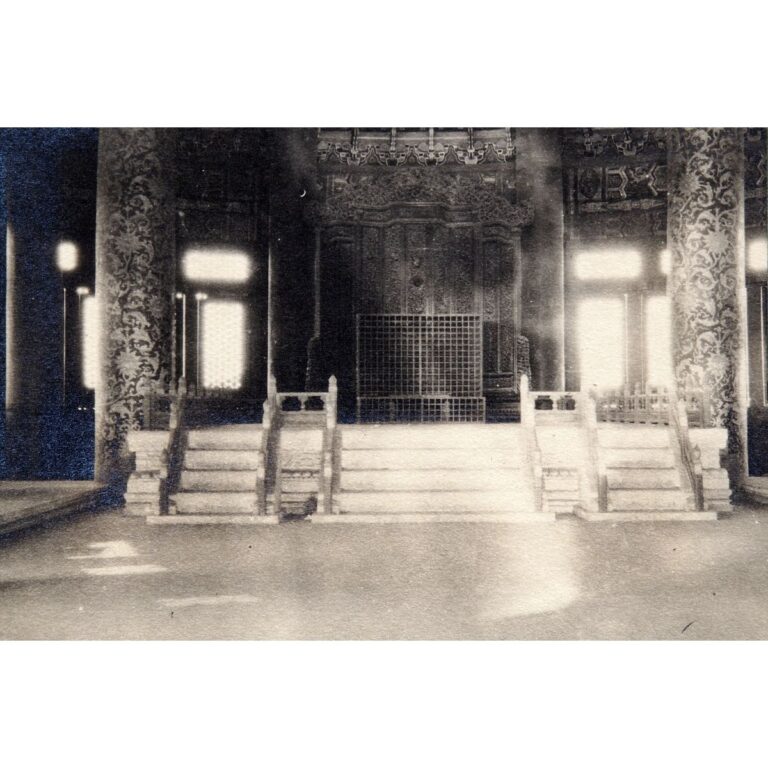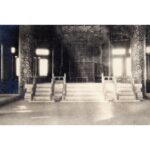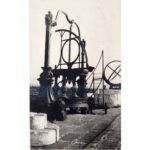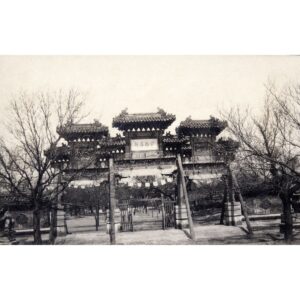Photography Emperor’s Throne in the Qinian Hall
A black-and-white photograph showing the emperor’s throne in the Qinian Hall (Qiniandian 祈年殿), which literally means “Hall of Supplications of the Year”, and is the central part of the Temple of Heaven complex in Beijing. The complex was built in 1420 by the Yongle Emperor (reigned 1402–1424). Here the emperors of the Ming and Qing dynasties performed the rites of heavenly worship twice a year. In Qinian Hall, on the day of the summer solstice, the emperor made offerings to the heavens and the ancestors, asking them for favour for the coming half year. In literature it is often called “Hall of Prayer for a Good Harvest”. It is the oldest and most famous part of the Temple of Heaven complex.
The site of the throne is marked by a scaffold made of metal mesh. It faces south, with two pillars in front and behind it. Together they are called “Dragon Well Pillars” (longjing zhu 龍井柱) and represent the four seasons. There are 12 ... more
A black-and-white photograph showing the emperor’s throne in the Qinian Hall (Qiniandian 祈年殿), which literally means “Hall of Supplications of the Year”, and is the central part of the Temple of Heaven complex in Beijing. The complex was built in 1420 by the Yongle Emperor (reigned 1402–1424). Here the emperors of the Ming and Qing dynasties performed the rites of heavenly worship twice a year. In Qinian Hall, on the day of the summer solstice, the emperor made offerings to the heavens and the ancestors, asking them for favour for the coming half year. In literature it is often called “Hall of Prayer for a Good Harvest”. It is the oldest and most famous part of the Temple of Heaven complex.
The site of the throne is marked by a scaffold made of metal mesh. It faces south, with two pillars in front and behind it. Together they are called “Dragon Well Pillars” (longjing zhu 龍井柱) and represent the four seasons. There are 12 inner and 12 outer pillars placed in a circle on the outer wall of the temple. The former represent the 12 traditional hours of the day, and the latter represent the 12 months of the year. That is the traditional Chinese calendar, which was the cosmological basis for performing rituals. The throne stands on a round platform made of white marble hanbai yushi 漢白玉石. It is decorated with carved dragon and phoenix motifs symbolising the emperor and empress. The columns and ceiling are richly decorated with patterns in the colour palette of the five elements (wuxing 五行) – red, blue, yellow, green, and white. The magnificent coffered ceiling above the throne, carved with 9 dragons, has the same colour scheme. In the centre of the hall is the most sacred part, the Holy Altar, on which the plate of the God of heaven was ritually placed. On the other eight altars arranged around the wall, the plates of ancestors (lingpai 靈牌) were placed, namely the plates of former emperors who, according to tradition, became gods and joined the God of heaven. Even today, gifting the ancestors is customary in China. People place on home altars ancestral plates with the first and last names and the year of birth and death of the deceased along with filled sacrificial vessels and incense, honouring their ancestors as the emperors of the Ming and Qing dynasties were honoured.
The photograph is the 175th of 449 photographs of Beijing and its surroundings in the album of Ivan Skušek Jr., purchased during his stay in Beijing (1914–1920). In the handwritten inventory of the album, the photograph is referred to as Himmels-Tempel: Inneres des Haupttempels (Kaiserthron). (DZ, MV)



































Do you have a comment or additional information about the subject?